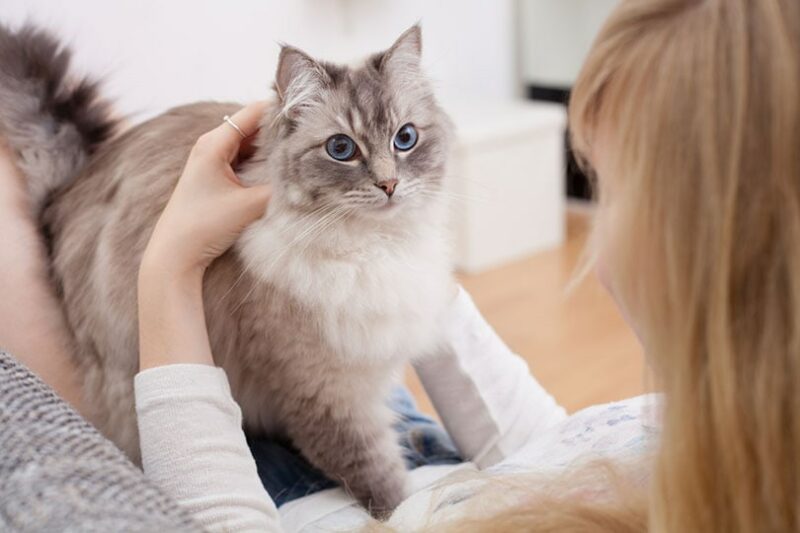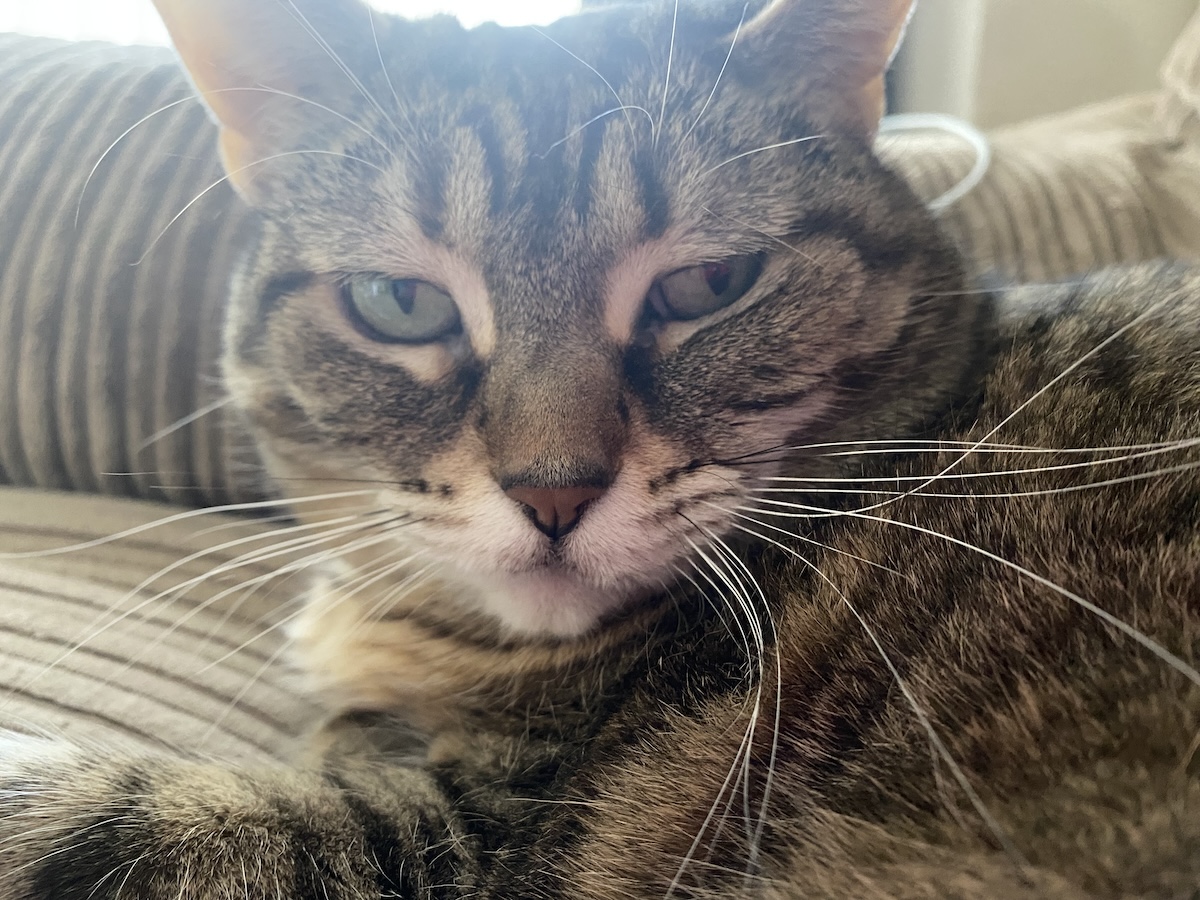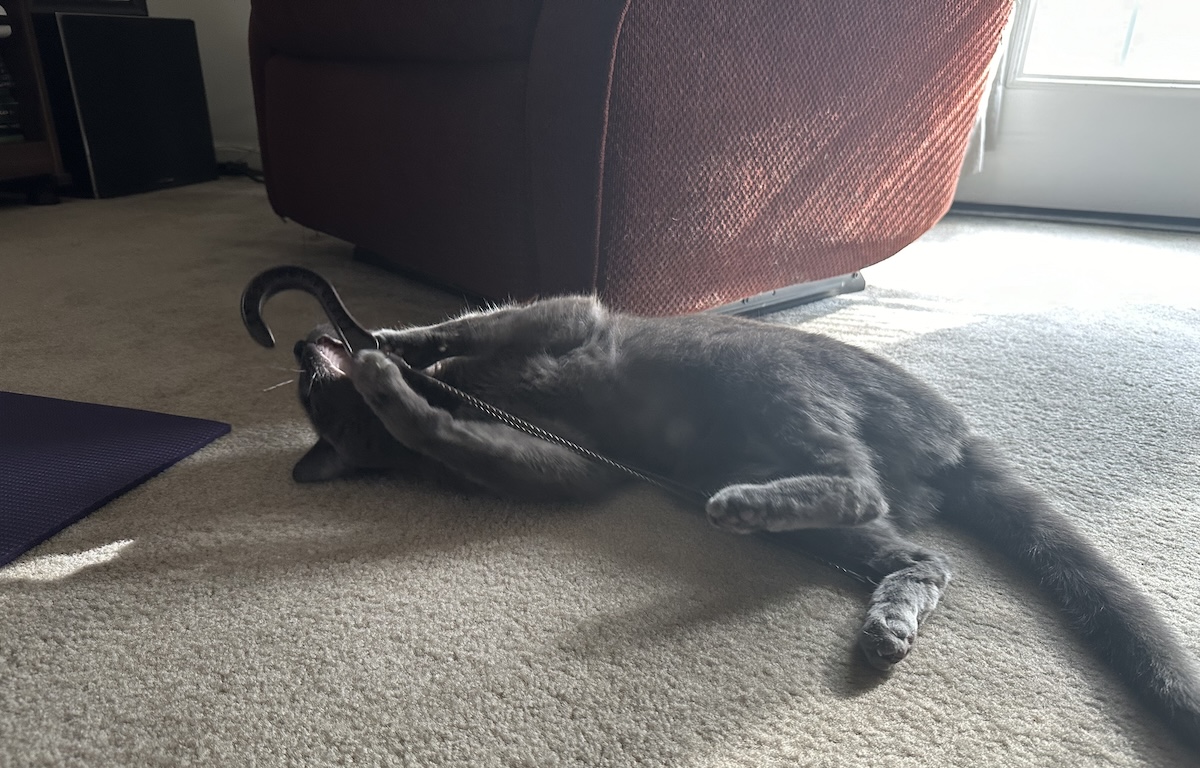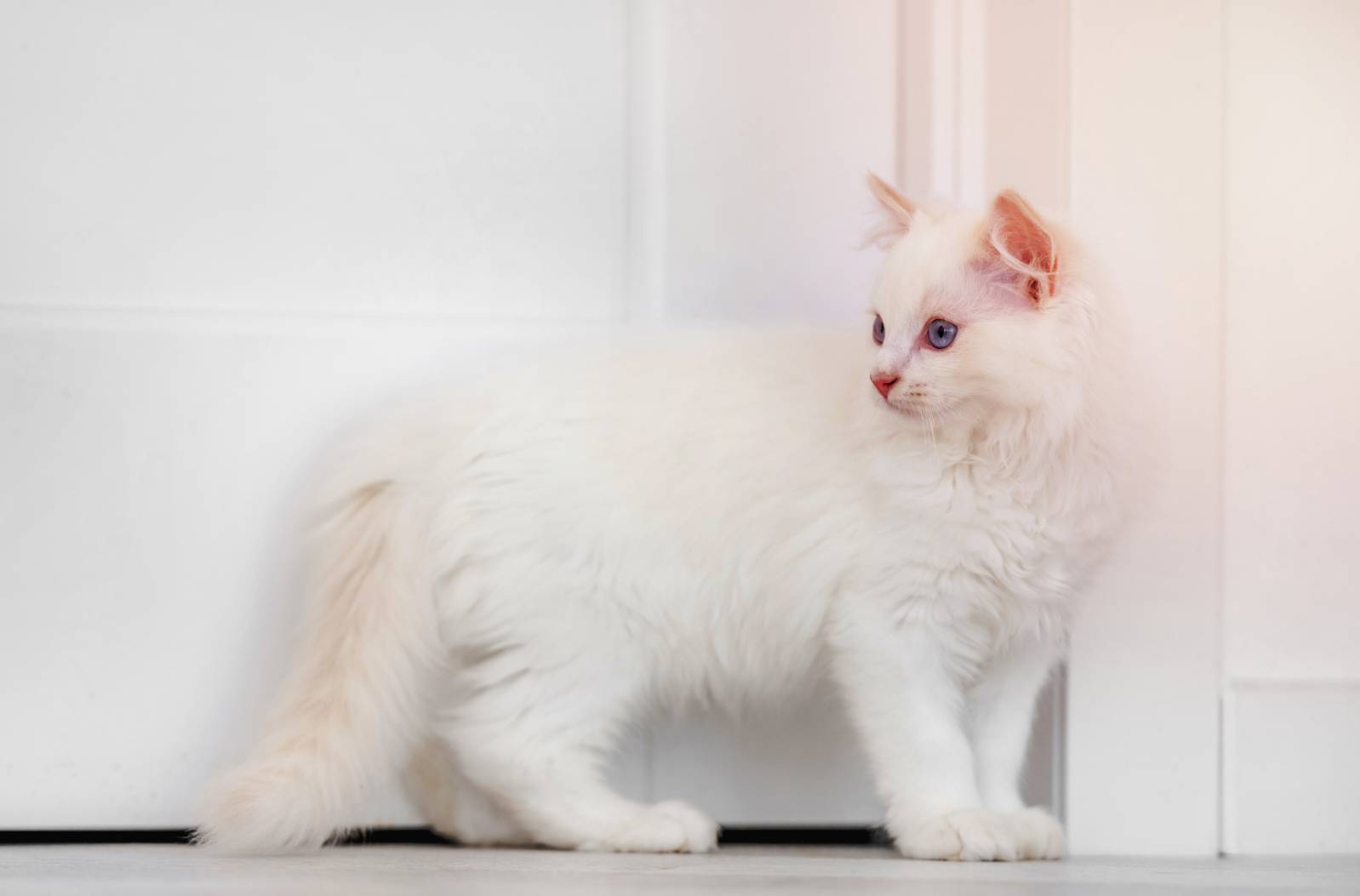If you’re considering adopting a new cat this year, you’re in good company. The number of Canadian households that own a cat is steadily increasing. In 2020, 8.1 million cats were kept as pets in Canada. At the time of writing, this number has risen to 8.5 million.
One of the most important things to consider before adopting any new pet is if you have room in your budget to care for them. You may be spending up to $1,500 a month on your cat. While cat ownership tends to be less expensive than owning a dog, you should still educate yourself on the costs. Keep reading to learn everything that you need to know about the price of having a cat in Canada.
Bringing Home a New Cat: One-Time Costs
There are several one-time costs you should expect to pay when bringing home your new pet. These costs include acquiring the cat and the basic supplies you’ll need when they come home.
Free
Adopting a new kitty doesn’t have to cost any money at all. While finding one for free isn’t as commonplace today as it used to be, you may get lucky. Sometimes loving pet owners need to rehome their cats for reasons outside their control. They may put you through a vetting process to ensure you’re the best pick for their beloved pet, so you should be prepared to meet with them beforehand.
Some animal shelters may also waive the adoption fees for special needs or senior pets.
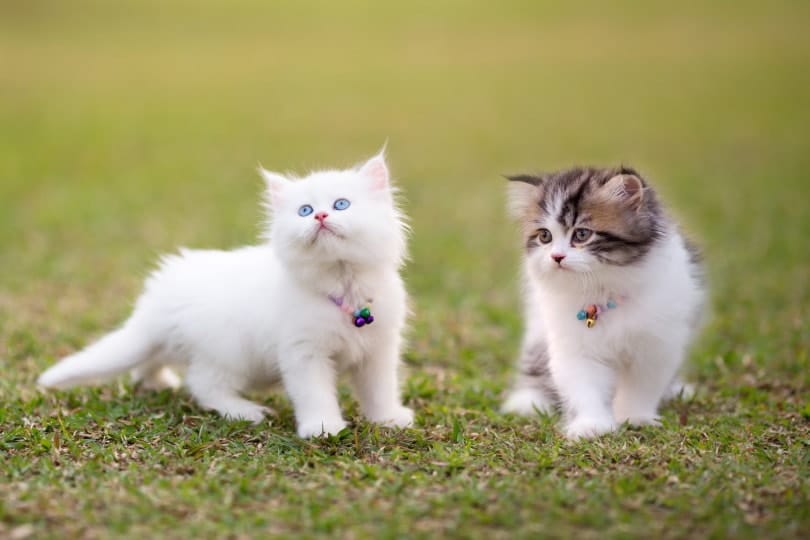
Adoption
- $75–$250
Adopting a cat is a fantastic way to give a loving home to a cat while saving money and supporting your local pet shelter. In addition, adoption is much more affordable than buying from a breeder, and your adoption fees often include spaying or neutering and initial vaccinations.
Cats available for adoption are homeless and are often brought in off the street, so when you adopt, you’re saving the life of an otherwise at-risk cat.
Organizations like the SPCA often hold adoption events where they lower the fees in an attempt to find homes for the many animals in their care. If you’re on a tight budget, you might want to reach out to your local SPCA to see when its next adoption event will be held.
Breeder
- $500–$3,000+
Breeders are in the business of breeding cats. This seems obvious, but it’s worth noting because some people can feel conflicted about the ethics of breeding. The controversy is that breeders are contributing to overpopulation while shelters focus on saving strays and homeless cats. That said, cats from reputable breeders may be better behaved, as they’ve been socialized from a young age.
A big draw of buying from a breeder is that you are often provided with genetic test results to confirm your new pet’s health. You’ll also know exactly what you’re getting regarding your cat’s lineage.
The cost of buying a kitty from a breeder will depend entirely on the breed in question. Exceptionally rare cats will be hard to find and in high demand. For example, a Savannah cat breeder on Vancouver Island sells kittens for up to $35,000.
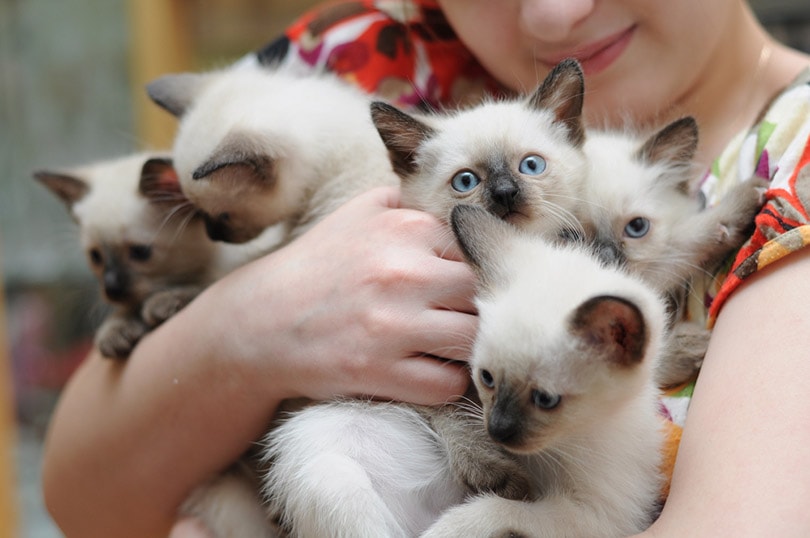
Initial Setup & Supplies
- $700–$900+
The initial setup and supplies you’ll need for your new kitty will depend on whether you’ve had a cat before. If you have some of these supplies already on hand, you’ll be able to save quite a bit of money.
If you’re adopting your cat from a shelter, you likely won’t need to worry about the spay or neuter fee, as most include that in the adoption fee.

List of Cat Care Supplies & Costs
| ID Tag and Collar | $50 |
| Spay/Neuter | $150 |
| Initial Vet Exam | $200–$500 |
| Microchip | $45-$55 |
| Bed | $30–$50+ |
| Litter Box | $30–$100 |
| Litter Scoop | $10 |
| Toys | $20–$50 |
| Carrier | $50–$100 |
| Food and Water Bowls | $20 |
| Cat Tree | $75–$100+ |
| Nail Clipper (optional) | $7 |
| Brush (optional) | $10 |
How Much Does a Cat Cost per Month?
- $55–$1,500 per month
The annual costs of cat ownership run owners anywhere between $495 and $1,570. Of course, this ballpark number will not accurately reflect every household.
How much you pay per month for your pet’s care will depend on many factors. Their health, your budget, and your shopping savviness will be the most significant determiners of your annual fees. For example, cats with health conditions like diabetes or kidney disease will need special (read: expensive) food to stay healthy.
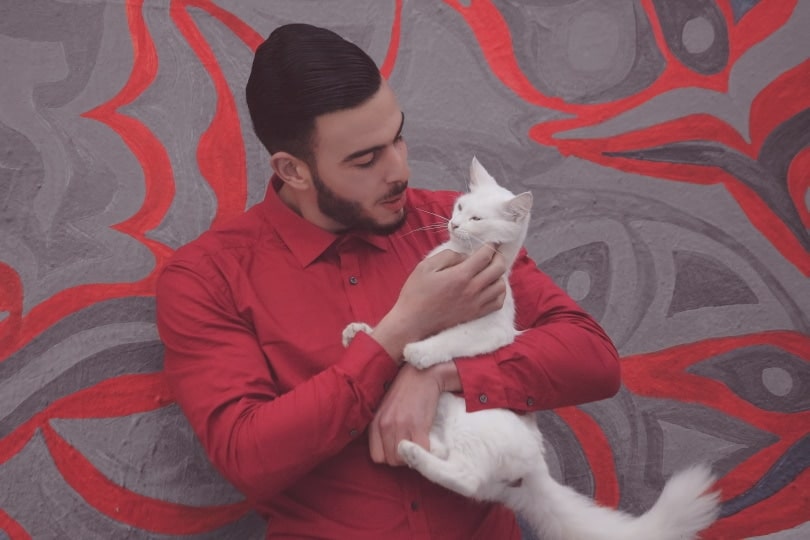
Health Care
- $0–$1,000+ per month
If your cat is young and healthy, chances are you won’t have any monthly healthcare fees to worry about. But of course, if your pet has any health conditions or requires any medication, you’ll need to start factoring in these expenses into your monthly budget.
If your kitty is healthy, you should be looking at annual costs for their health care. A yearly checkup at the vet is recommended and will run you around $200.
Food
- $30–$100+ per month
Food is one of the most significant factors to consider when working out your budget, as it is something you’ll need to buy for your cat continuously.
How much you’ll spend on your cat’s food will rely on what food you’re opting to feed them and your cat’s health. Cats with certain health conditions will need higher quality and often prescription-strength food.
Regardless of their health status, you should always feed your cat a high-quality diet. Cheap food full of fillers and unhealthy ingredients may save you a few bucks but will cost you more in the long run. If your cat isn’t getting the nutrients that they need from their diet, you will be spending a lot of money at the vet.
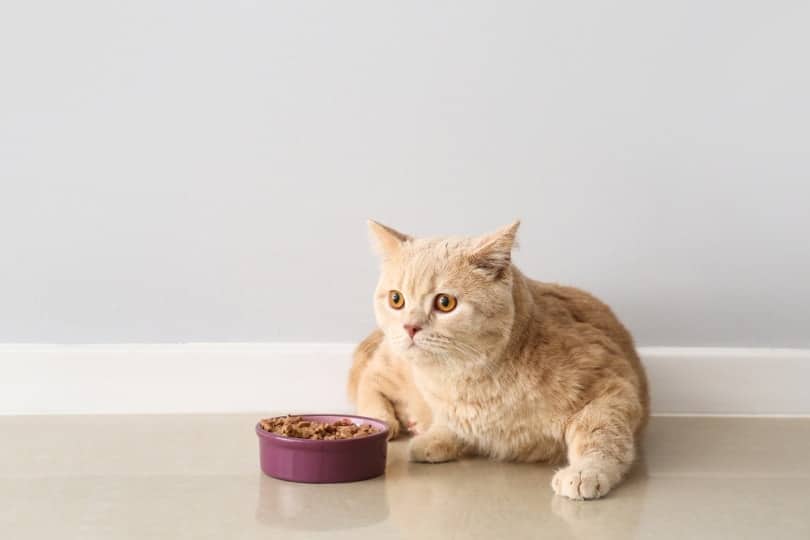
Grooming
- $0–$75 per month
Most cat owners can handle their pet’s grooming needs at home. Unlike dogs, cats don’t need regular baths or visits to the groomer to keep their coat in tip-top shape. Brushing your cat’s fur is often all that’s necessary, as they’ll take care of the bathing on their own. How frequently you brush will depend upon your cat’s fur length. Cats with long, thick coats, like Persians, will need daily brushings to prevent knots and mats.
If you decide to take your cat to the groomer, the price will depend on what needs to be performed. For example, if your cat is matted, your groomer may need to give them a shave, which will cost more than just a brush and nail trim.
Medications & Vet Visits
- $0–$200+ per month
Unless your pet has a health condition, you won’t need medication or monthly visits to the vet. There are annual costs you should consider, though. At the very least, you should make space in your budget for your cat’s annual wellness exam and vaccines. The exams typically cost anywhere between $100 and $200. Vaccines will run you around $75, depending on which and how many your cat is overdue for. Exams and vaccines break down into an average of $15 to $25 monthly.
Dental care is a considerable expenditure you should also consider. For example, tooth extraction involves anesthesia and surgery, so it can cost anywhere between $300 and $1,300. A professional dental cleaning may cost between $100 and $600.
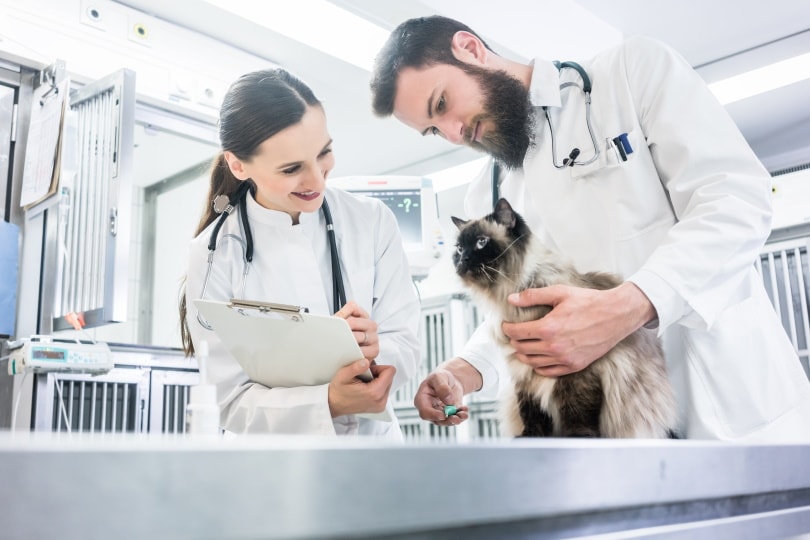
Pet Insurance
- $0–$60 per month
Pet insurance is an optional expenditure, but you might consider it if you have space in your budget. While insurance does require a monthly payment regardless of whether you use it or not, it can provide peace of mind if your cat were to have an accident or fall ill, as it doesn’t take long for the vet bills to start piling up.
Pet insurance policies vary in both cost and coverage. We recommend researching before choosing a company, as you’ll want to get the biggest bang for your buck. Use this pet insurance cost and comparison article as a jumping-off point.
Environment Maintenance
- $20–$55+ per month
Environment maintenance refers to things in your cat’s environment that you’ll need to replace occasionally to keep their quality of life as high as possible. This includes items such as litter, cardboard scratchers, and deodorizing sprays. Litter is the one expenditure you’ll need to be buying consistently. The other products listed here may not need to be replaced every month, but chances are that you’ll probably need to replace them once a year.
| Litter | $20/month |
| Deodorizing spray | $5/month |
| Cardboard scratcher | $20/month |
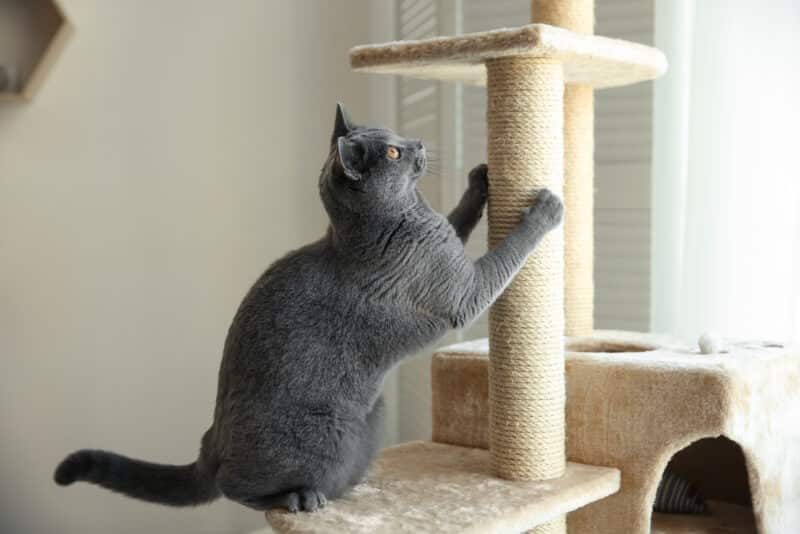
Entertainment
- $5–$30+ per month
Cat toys are an absolute must. You can’t be with your cat 24/7, so toys give your pet something to keep themselves occupied when you’re busy or at work. Bored cats can get into all sorts of trouble and may resort to scratching your furniture to pass the time. Also, cats that don’t get enough playtime can quickly become overweight, especially if they’re inside all the time. Think of cat toys as a necessary expense because they not only provide entertainment but also exercise.
We recommend swapping your cat’s toys out every few weeks to keep things fresh. You might also consider a cat toy subscription box, such as Meowbox. You’ll receive a new toy and treat haul monthly for just $29.95.

Total Monthly Cost of Owning a Cat
- $55–$1,500 per month
Don’t let the high end of that price figure scare you. Truthfully, you’re more likely to be paying on the lower end of that estimate. Cats with complex medical conditions can cost a lot, but unless you’re spending $1,000 per month on medication or vet visits, you won’t be paying anywhere near the high end of the estimate.
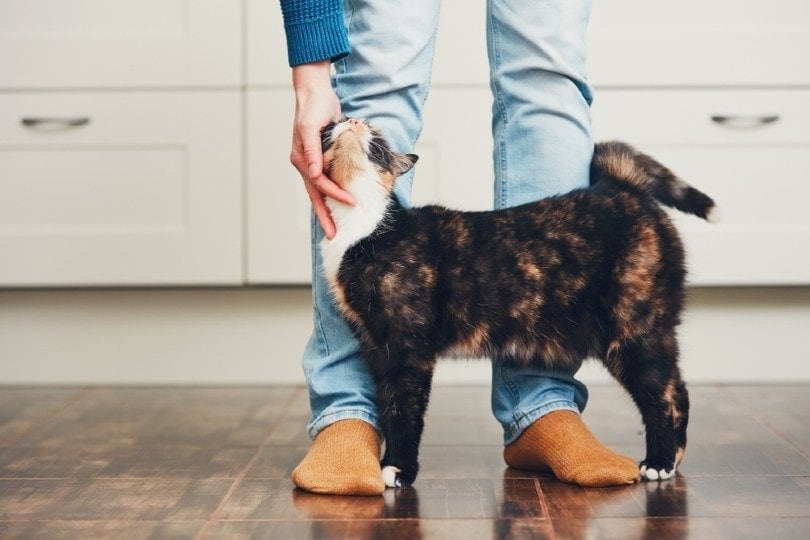
Additional Costs to Factor In
Owning a pet may call for other occasional costs. You won’t necessarily need to make space for these costs in your regular monthly budget, but it’s always a good idea to have an emergency fund you can tap into if necessary. If you don’t opt for pet insurance, you should have a separate bank account into which you can set aside funds in case your pet gets sick.
When you want to go on vacation, you’ll need to hire a pet sitter or pay for a boarding facility. These services charge on a per-day basis and can run as much as $30 per day.
Owning a Cat on a Budget
You can own a cat without breaking the bank. You must make room in your budget for the necessities: food, litter, and health care. But there are plenty of ways to save money on the other things your cat will need.
Saving Money on Cat Care
Use apps like Flipp to find deals on necessities like food and litter. Download extensions like Rakuten or Honey on your internet browser to help you earn money back or find redeemable coupon codes for online purchases. You can even search your local garage sale websites for second-hand items like scratching posts and cat beds. Keep in mind, however, that cats are territorial, and some may not take well to previously owned things.
You can DIY nearly anything your cat will need outside of food, water, and litter, including beds and cat trees.
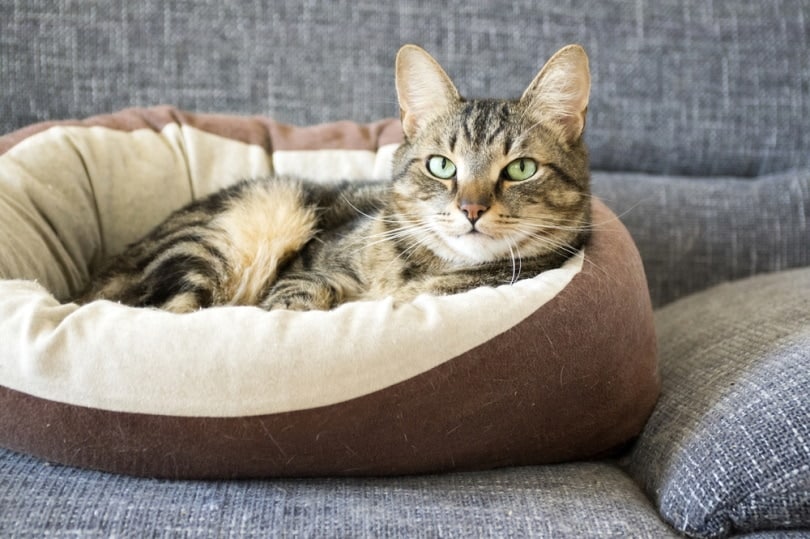
Conclusion
Bringing home any new pet can be expensive, but it is especially pricey if you’re starting from scratch and have never owned a pet before. The initial setup fees for buying a cat in Canada can run as high as $900, but once you have the necessities, you’ll only need to worry about monthly costs.
Care for your cat can cost anywhere between $50 and $1,500 per month. The higher end of this price estimate really only applies to cats with special needs. If your cat is healthy, your monthly expenses should only be food, litter, toys, and pet insurance if you opt for it.
Before you bring a new pet home, it is always a good idea to go over your budget to ensure you have enough expendable income to afford your new addition. Once your finances are in check, you are ready to welcome your kitty to their new home.
Featured Image Credit: rock-the-stock, Shutterstock

